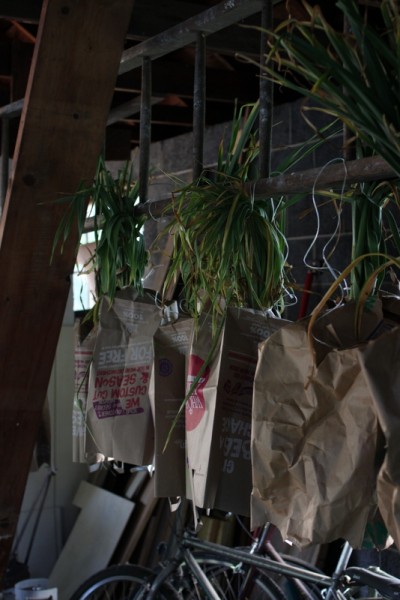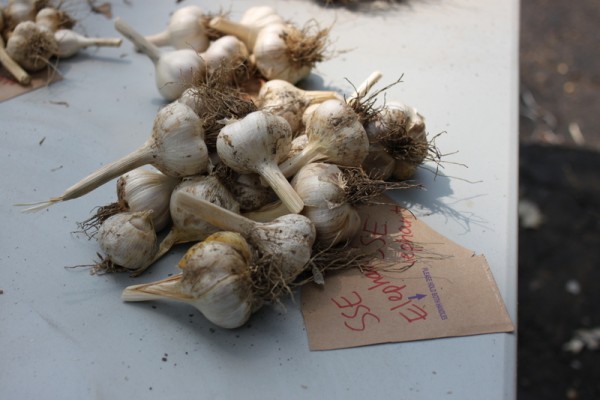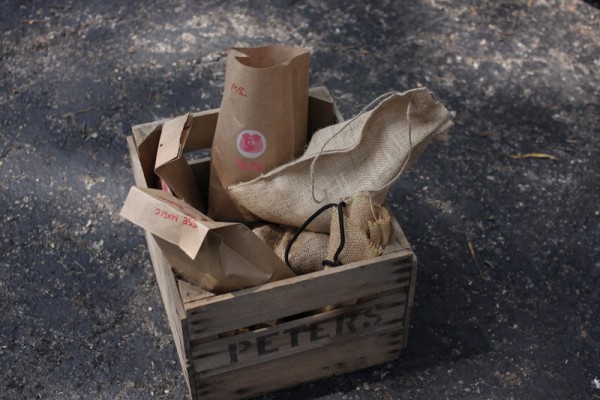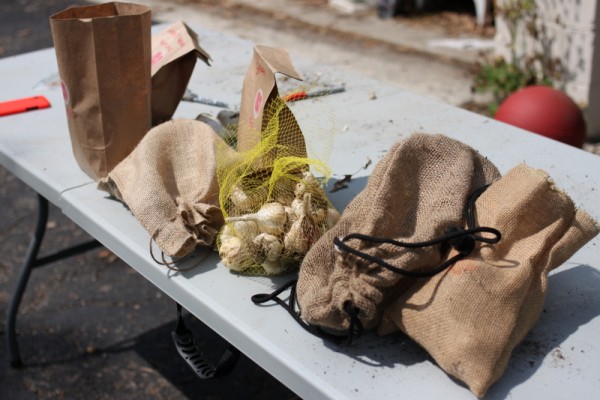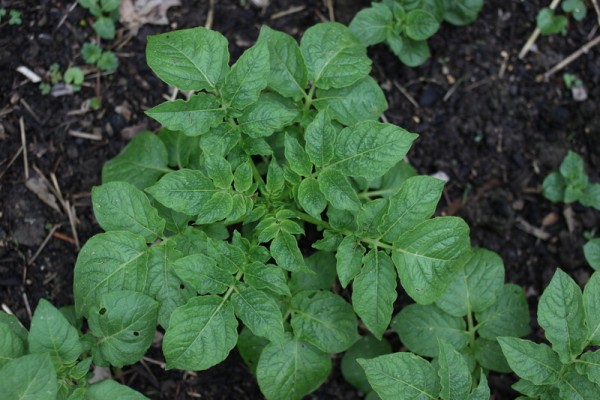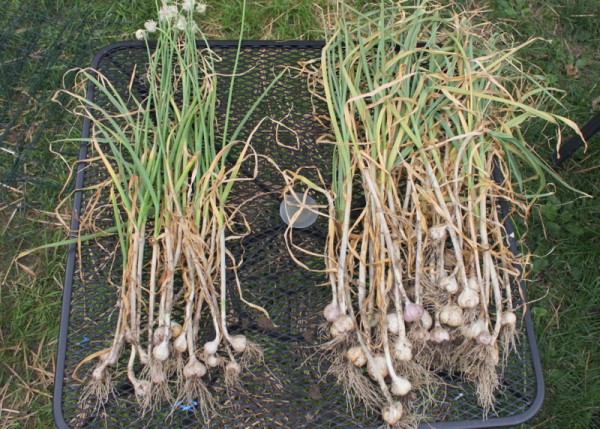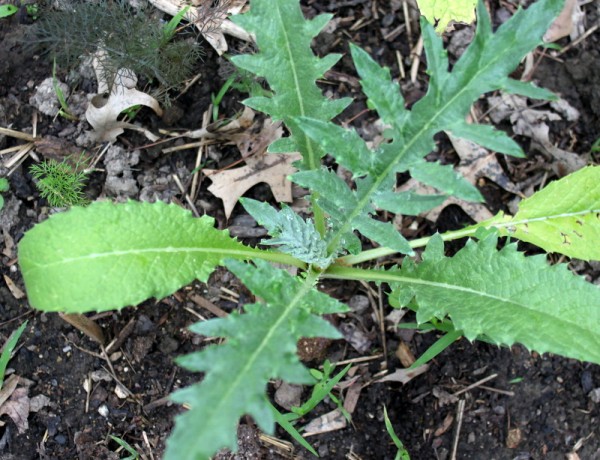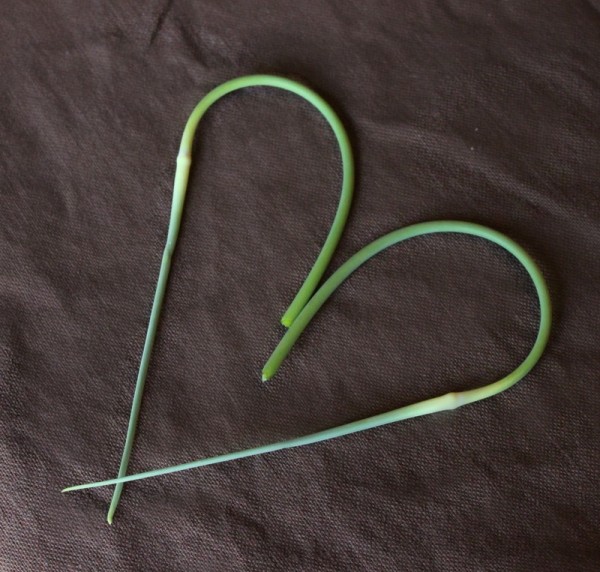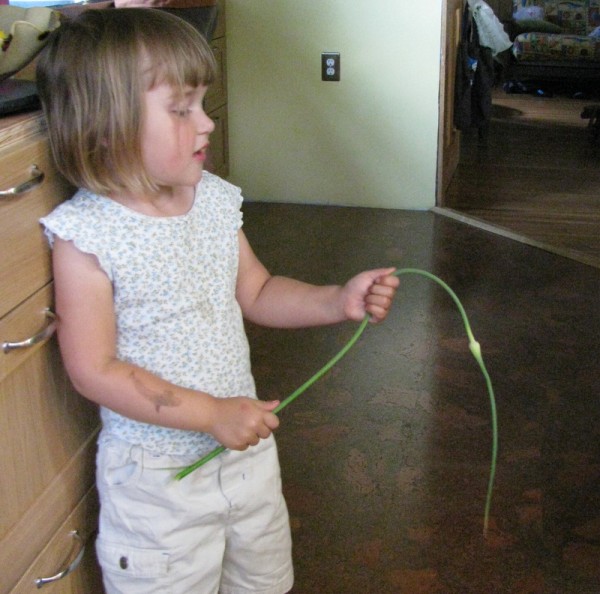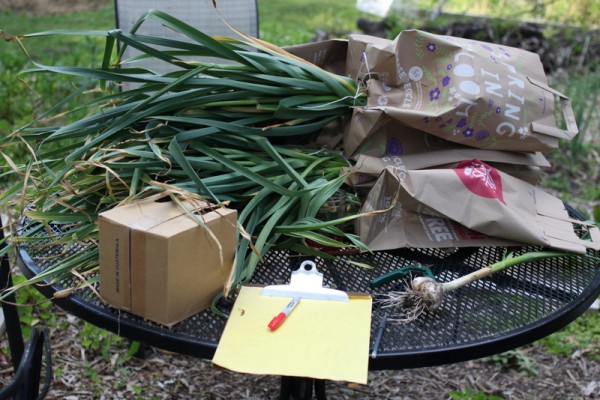 What's the big mess? Just the 2014 garlic harvest in action. We harvested over 100 heads of garlic for ourselves, gifts, and sharing. Here's how to cure and store garlic:
What's the big mess? Just the 2014 garlic harvest in action. We harvested over 100 heads of garlic for ourselves, gifts, and sharing. Here's how to cure and store garlic:
Harvesting Garlic
First, we waited until the bottom sets of leaves of the garlic turned brown. Harvest too early and the bulbs will not have reached their biggest size. Harvest too late (when all the greens are brown) and some cloves may start to sprout.
We harvest by hand by teasing away the soil around the head with a trowel and hand cultivator. Then we gently lifted the head out and knocked off any dirt. We laid the heads on the ground while we worked through the rows. We set aside any heads that were accidentally clipped with a tool or greens broken off to use fresh without curing.
Curing Garlic
Next we needed to cure the garlic to set it in a storage state. It's delicious fresh - milky, sweet, and full flavored - but will rot quickly if not cured in a dark, arid environment.
We bunched up 6-8 heads of garlic by the greens and tied them together. Then we hung them through the bottom of a paper bag for shade. We hung the whole package in the garage, which is dry and holds a moderately even temperature.
Another option, one which Joseph of Swainway Urban Farm employs, is to lay the garlic on a hardware cloth table in the hoop house covered in shade cloth. We didn't want to put shade cloth on the hoop just for garlic, hence we chose the garage method.
It's time to move garlic to storage in two to three weeks when the paper-like wrapping is tight and dry and leaves have fully dried.
Storing Garlic
Garlic stores best in a dry, dark, cool (40 degrees) location. This can be hard to achieve in a humid environment like Ohio. We choose to store in multiple locations to ensure that at least some of the harvest will last until the following spring.
We started by cutting the garlic heads from the now dried leaves and sorted it into piles by variety. Then we set aside the biggest and best heads for the seed garlic we want to replant in the fall. This goes in a paper bag stored with our other seeds in a cool, dark closet.
We put the Elephant garlic in a burlap bag to keep in the kitchen pantry. Elephant is fun to grow and use but it doesn't keep as long as other varieties so we'll use it first.
The rest of the varieties we placed in paper or burlap bags. We layered these loosely in a wooden box to store in a dry, cool closet. We'll check on the garlic often. If the garlic isn't doing well (sprouting, softening, or rotting), we'll freeze cloves or a garlic/oil paste to prolong the harvest.

